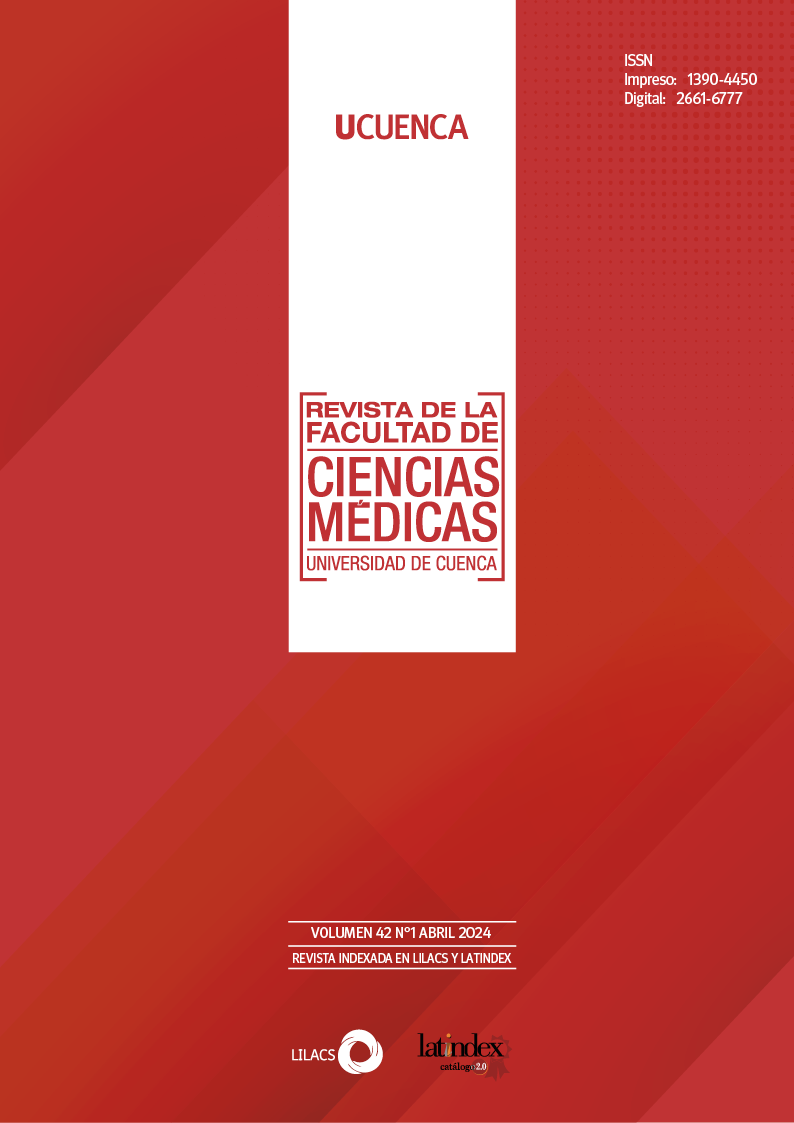Validation of a screening instrument to detect vitamin D deficiency and associated factors, in the population of the Cuenca canton, 2023
DOI:
https://doi.org/10.18537/RFCM/42.01.02Keywords:
validación instrumento, deficiencia de vitamina D, factores riesgoAbstract
Vitamin D (VD) 25-hydroxyvitamin D (25(OH)D) plays an important role in the homeostasis of calcium and phosphorus, being part of bone health, especially in the absorption of calcium and phosphorus in the intestine and kidney. The decrease in VD in adults causes osteomalacia, rickets, risk of osteoporosis and suffering from fracture. Blood values of <20 ng/ml or 50 nmol/L are considered VD deficiency, VD insufficiency is 20 ng/ml to 30 ng/ml, and normal >30 ng/ml.
Objective: design and validate a screening instrument to identify VD deficiency and associated risk factors in people over 60 years of age in the population of Cuenca.
Methods: cross-sectional and descriptive validation study, carried out in people over 60 years of age residing in Cuenca, developed during the period from May 10 to July 7, 2023. The participants signed the informed consent. A review of the literature was carried out and a group of experts contributed to construct a questionnaire that included relevant topics for the detection of VD deficit and risk factors. The instrument consisted of the following sections: sociodemographic information, risk factors: skin color, exposure to sunlight, use of sunscreen, type of diet, alcohol or cigarette consumption, physical activity, and determination of the level of DV. A descriptive and validation analysis, Cronbach's alpha and correlation matrices with the Spearman test were carried out. The STATA program version 16 for Mac was used.
Results: 85 people participated, with an average age of 70.61 and 64.3% were women. With the gold standard (blood determination of VD) VD insufficiency of 45.9% was detected with values ranging between 20 ng/mL to 30 ng/mL, while the deficiency was 37.6% with a value of < 20 ng/ml. The people who collaborated in the validation of the instrument presented 100% insufficient VD nutrition, physical activity was inadequate in 75.3%. Internal consistency presented unidimensionality in exposure to sunlight and multidimensionality in comorbidities.
Conclusion: The designed instrument demonstrated criterion validity and usefulness to detect VD deficiency and associated risk factors, applied in people over 60 years of age residing in the Cuenca canton.
Downloads
Published
Issue
Section
License
Copyright (c) 2024 Sergio Vicente Guevara Pacheco, Gicela Palacios Santana, Goethe Sacoto Flores, Karen Guevara Serrano, José Roldán Fernández, Astrid Feicán Alvarado, Ingris Pelaez-Ballestas

This work is licensed under a Creative Commons Attribution-NonCommercial-ShareAlike 4.0 International License.
Copyright © Autors.

You are free to:
 |
Share — copy and redistribute the material in any medium or format |
 |
Adapt — remix, transform, and build upon the material for any purpose, even commercially. |
Under the following conditions:
 |
Attribution — You must give appropriate credit, provide a link to the licence, and indicate if changes were made. You may do so in any reasonable manner, but not in any way that suggests the licenser endorses you or your use. |
| NonCommercial — You may not use the material for commercial purposes. | |
| ShareAlike — If you remix, transform, or build upon the material, you must distribute your contributions under the same license as the original. |
| No additional restrictions — You may not apply legal terms or technological measures that legally restrict others from doing anything the licence permits. |






